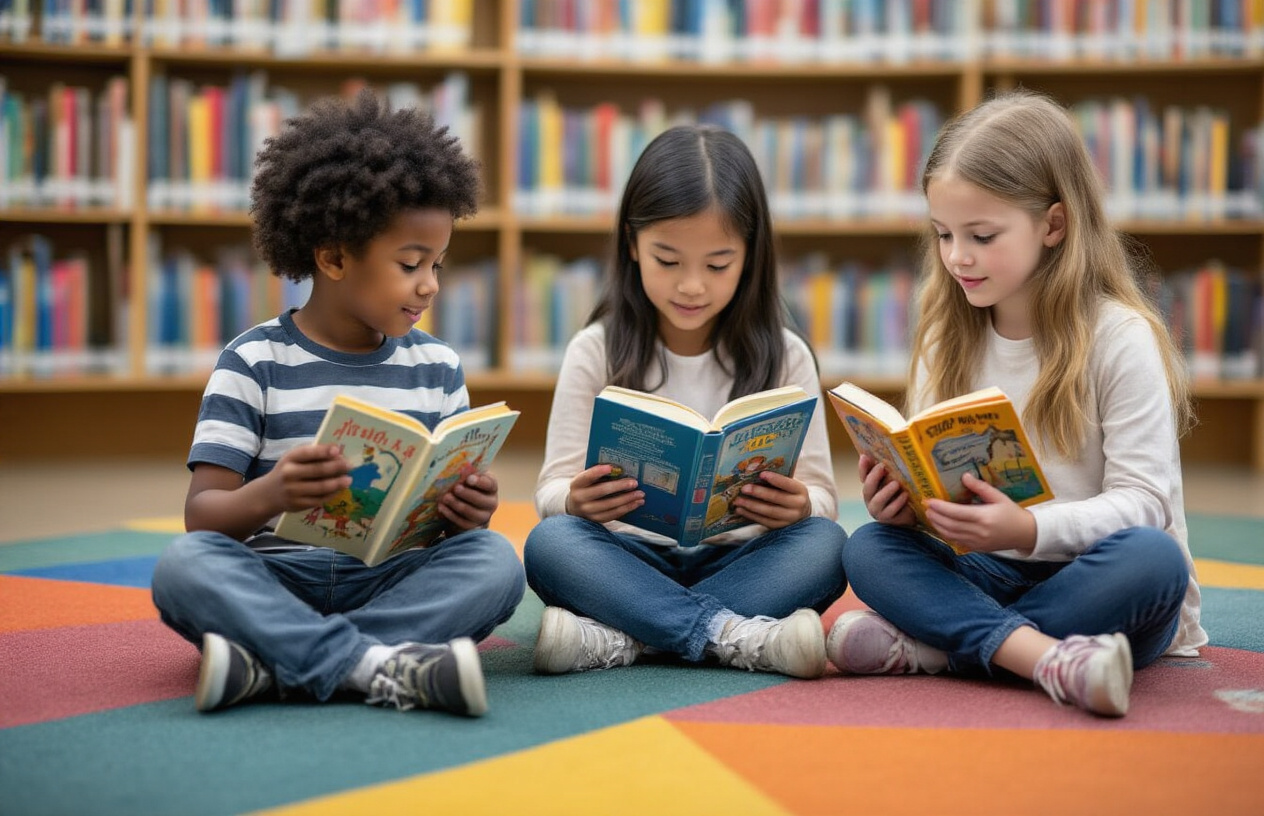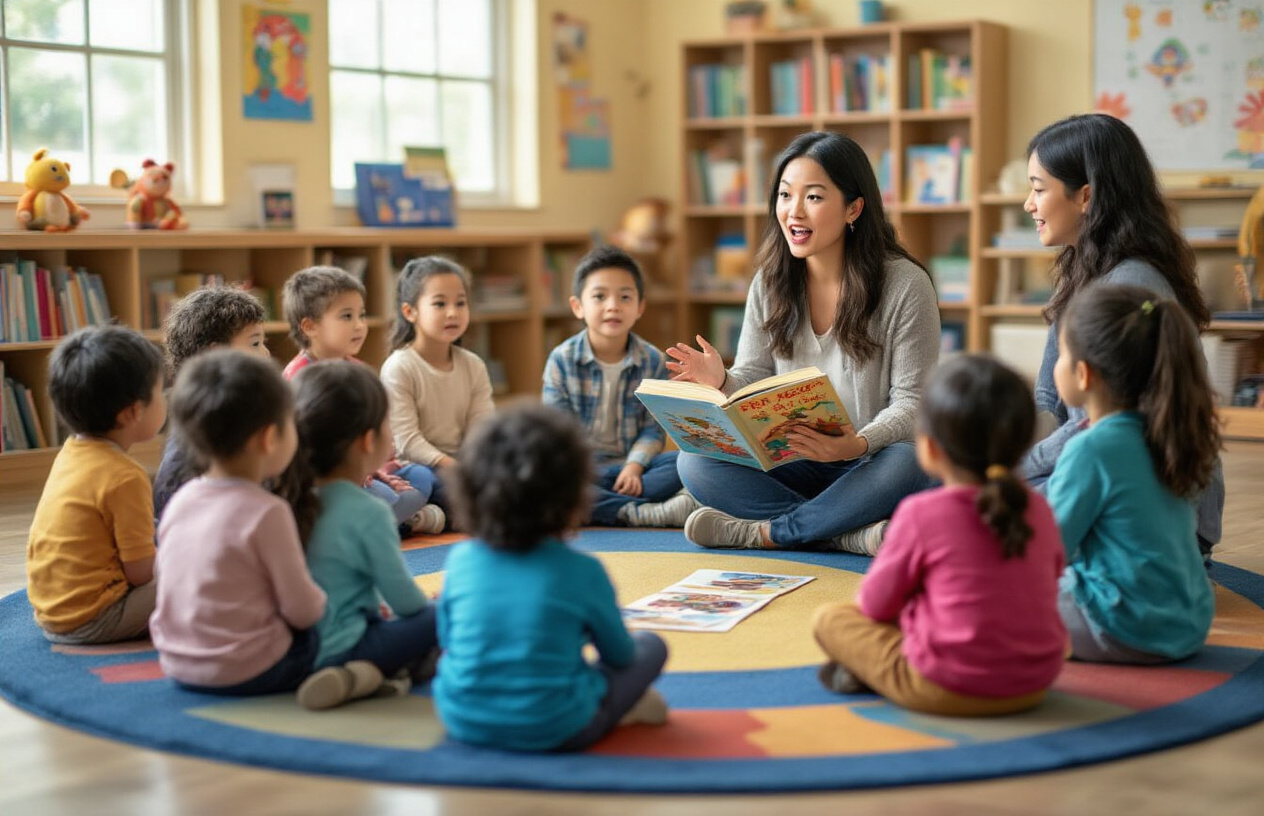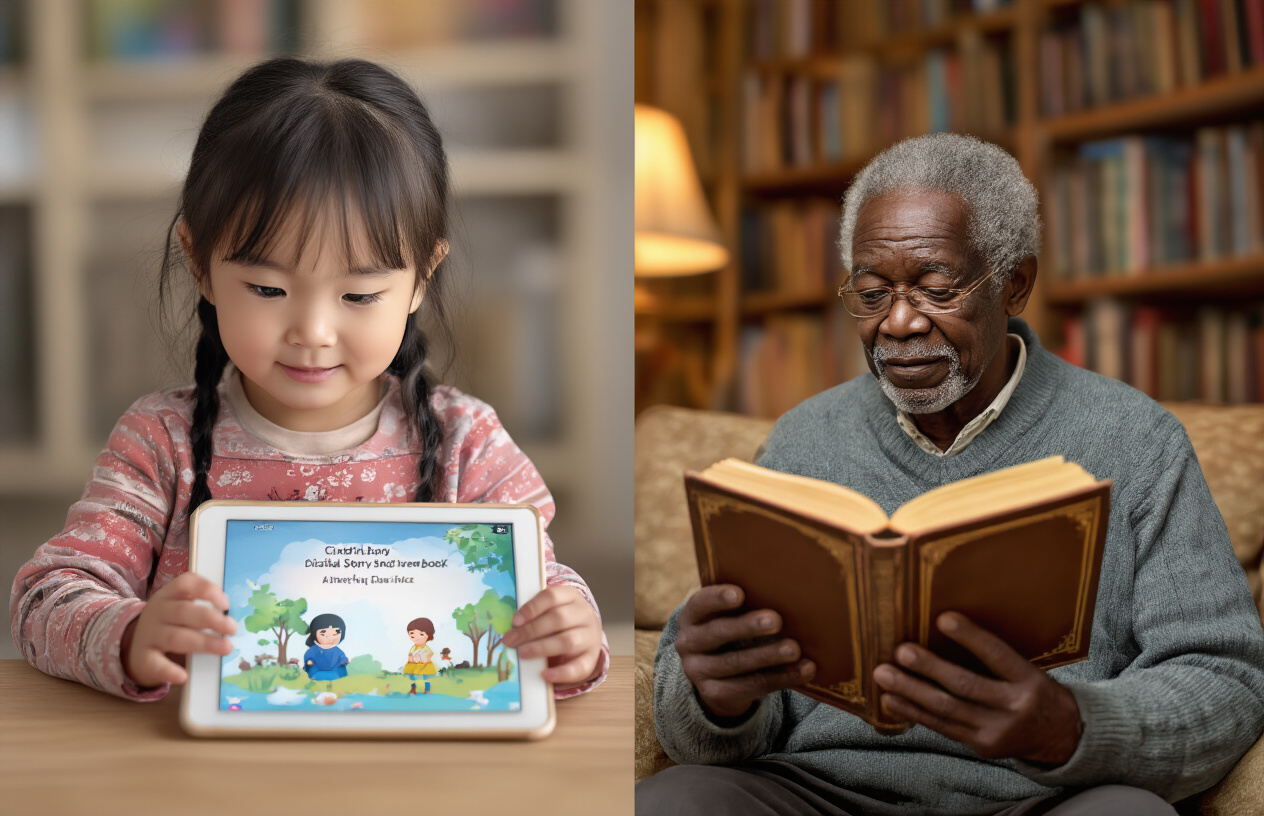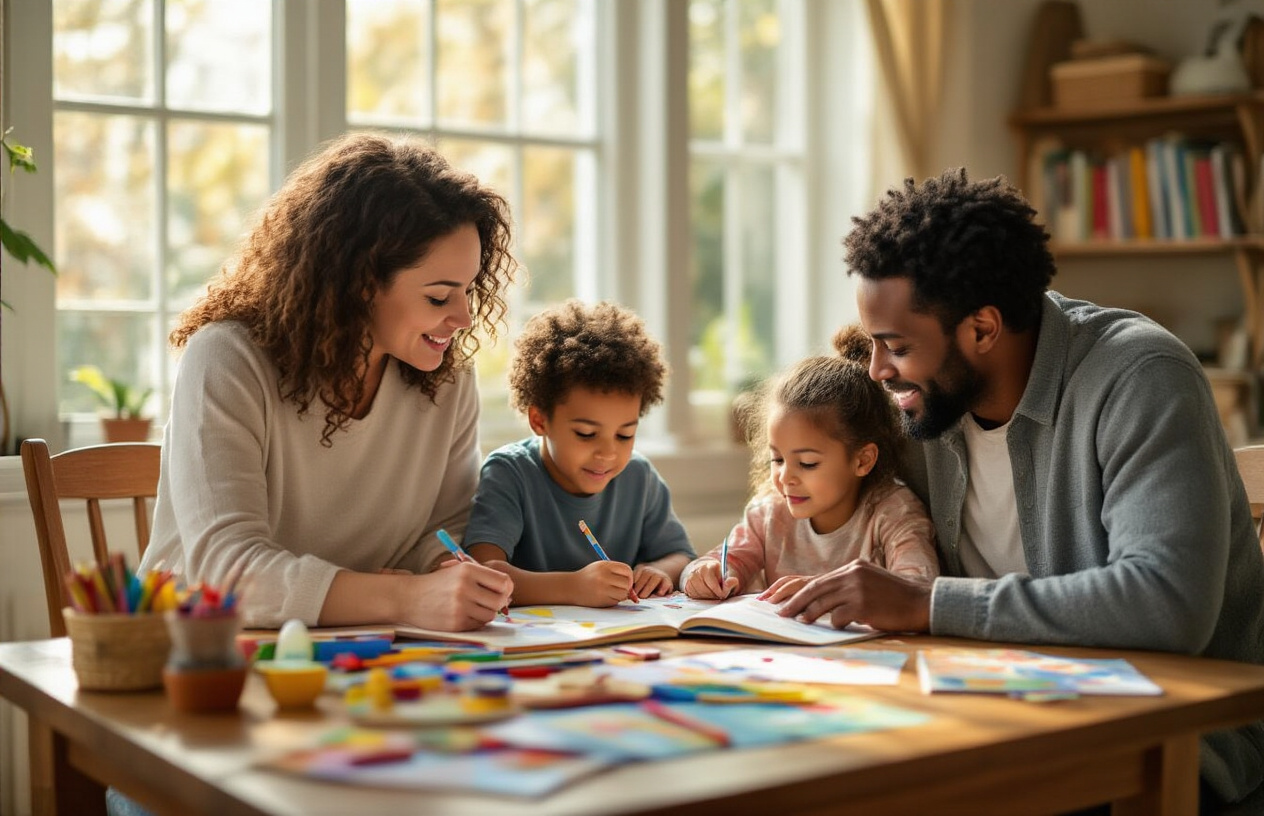Storytelling for children
Storytelling for children
Ever notice how your kid's eyes light up when you say, "Once upon a time"? It's pure magic—they're instantly transported to another world. But here's the thing: effective storytelling for children isn't just about entertainment.
I spent years watching parents struggle through bedtime stories, missing golden opportunities to build vocabulary, emotional intelligence, and critical thinking skills. Yep, those silly voices and dramatic pauses are actually shaping little brains.
The best children's stories don't just kill time—they create meaningful connections. When you master the art of storytelling, you're not just being the cool parent with the good stories. You're literally rewiring their neural pathways for empathy and communication.
But what separates a forgettable tale from one they'll beg to hear again and again? That's where things get interesting...
The Power of Storytelling in Child Development
Building Language and Vocabulary Skills
Kids who hear stories regularly pick up new words without even trying. Think about it - stories expose children to words they might not encounter in daily conversations.
When you read "The Very Hungry Caterpillar" to a toddler, they're not just learning about a caterpillar's journey. They're absorbing words like "cocoon" and "chrysalis" - terms they'd rarely hear otherwise.
Stories also help kids understand context. They don't just memorize definitions; they see how words work in sentences and how language flows. This natural learning sticks better than flashcards ever could.
Parents often notice their little ones repeating phrases from favorite stories. That's language acquisition happening right before your eyes!
Enhancing Imagination and Creativity
Stories open doors to worlds that don't exist. A child listening to tales about dragons isn't just entertained—their brain is busy creating images, sounds, and even smells of these magical creatures.
This mental workout is priceless. When kids imagine story scenes, they're developing the same creative muscles they'll use to solve problems later in life.
Notice how children who hear lots of stories often come up with the most inventive games? That's no coincidence. Their brains have been trained to think beyond what's directly in front of them.
Developing Emotional Intelligence
Stories are emotional training grounds. Through characters' experiences, kids learn to identify feelings before they have words for them.
When a character feels sad about losing a toy, children connect that to their own experiences. They're practicing empathy in a safe space.
Stories also offer templates for handling tough situations. A child who's heard tales about characters overcoming fears might draw on those narratives when facing their own anxieties.
The beauty is how effortless this learning feels. No lectures needed—just good stories that resonate.
Strengthening Parent-Child Bonds
Story time creates sacred space between parent and child. It's 15 minutes where nothing else matters—no phones, no distractions, just shared adventure.
Physical closeness during reading adds another dimension. That comfortable cuddle while turning pages builds security and trust that extends beyond story time.
Many adults still remember specific books their parents read to them—not just the stories, but the feeling of being cherished during those moments.
The shared language of favorite stories becomes family shorthand too. References to beloved characters become inside jokes that strengthen family culture for years to come.
Selecting Age-Appropriate Stories

Stories for Toddlers (Ages 1-3)
Picking the right stories for toddlers isn't rocket science, but it does require some thought. At this age, kids love repetition and simple concepts they can grasp.
Go for books with bright, bold pictures and minimal text. Board books are perfect since those tiny hands aren't exactly gentle! Look for stories about daily routines like bedtime, bath time, or mealtime – these help toddlers make sense of their world.
Animals are always a hit. A book with different animal sounds? That's storytelling gold for a 2-year-old. And don't worry about reading the exact words every time. Point to pictures, make silly sounds, and ask simple questions.
Tales for Preschoolers (Ages 3-5)
Preschoolers are ready for slightly more complex stories with actual plots. Their attention spans have grown, but keep it under 10 minutes.
Fairy tales work great now, but maybe save the super scary versions for later. Books about emotions help preschoolers name their big feelings. And stories with a bit of silliness? Absolute winners.
Picture books with more text are perfect, and they'll start connecting the words you read with the print on the page. Try stories with predictable patterns or phrases they can chime in with.
Narratives for Early Readers (Ages 6-8)
Kids at this age are either learning to read or already reading independently. This is when chapter books enter the chat.
Short chapter books with illustrations give them that "big kid" feeling while still providing visual support. Series books are fantastic – once they're hooked on a character, they'll want to read all the adventures.
Stories with more complex emotions and problems work well now. They're developing empathy and can understand different perspectives. Fantasy stories spark imagination, while realistic fiction helps them process real-world situations.
Don't ditch reading aloud, though! Reading books slightly above their independent level exposes them to rich vocabulary and complex storylines they'll love but might not tackle alone.
Effective Storytelling Techniques

Using Voice Modulation for Character Distinction
Want to bring your stories to life? Voice modulation is your secret weapon. Kids instantly connect with characters when each one sounds different. Try a deep voice for the bear, a squeaky one for the mouse, and a wise tone for the owl.
Your child will lean in closer when they hear these distinct voices. They'll remember characters better and follow the plot more easily. Don't worry about being perfect—even simple changes in pitch make a huge difference.
Incorporating Simple Props and Visual Aids
Got a scarf? It can be a river, a cape, or a magical cloud. Simple props transform storytelling from good to unforgettable.
Picture books work wonders, but don't stop there. Grab stuffed animals to represent characters. Use a flashlight for dramatic effect during spooky parts. Even finger puppets made from paper can captivate young listeners.
The beauty? These visual aids help children process information through multiple senses. They'll remember stories longer and understand concepts better.
Engaging Children through Interactive Elements
Stories shouldn't be a one-way street. Ask questions like "What do you think happens next?" or "What would you do if you were the princess?"
Try these interactive tricks:
-
Pause for predictions
-
Ask them to make sound effects
-
Let them choose between two possible story directions
-
Have them act out a character's movements
Kids who participate become invested in the outcome. They're not just listeners—they're co-creators.
Creating Consistent Storytelling Routines
Children thrive on predictability. A regular storytelling time signals their brains to get ready for imagination and learning.
Make it special. Maybe it's after dinner with a special storytelling blanket, or before bed with a particular stuffed animal audience. The routine itself becomes part of the magic.
Some families use a "story starter" phrase like "Once upon a time in a land not so far away..." The familiar opening helps children transition into story mode.
Adapting Stories to Match Your Child's Interests
Notice your child is obsessed with dinosaurs? Transform classic tales by adding prehistoric creatures. Love trucks? The three little pigs might drive dump trucks instead of building houses.
Personalization makes stories stick. Insert your child's name as a character. Include familiar settings like their school or favorite park.
Watch their eyes light up when the story reflects their world. They'll ask for these customized tales again and again—and absorb more language, emotions, and problem-solving skills with each retelling.
Digital vs. Traditional Storytelling

Benefits of Physical Books
Nothing beats the feeling of cuddling up with your child and a real book. Physical books create moments that kids remember forever. When you turn pages together, point at pictures, and feel the textures, you're building connections that screens just can't match.
Physical books also work without batteries, can survive being dropped in the bathtub (well, some of them), and don't ping you with notifications. Kids actually focus better with real books too - they're not wondering what else they could tap on.
The research backs this up. Children tend to absorb more information from physical books, and bedtime stories from actual books help kids wind down better before sleep.
Appropriate Use of Digital Storytelling Apps
Digital apps aren't the enemy. They're actually pretty amazing when used right. Good storytelling apps can bring tales to life with animation, sound effects, and interactive elements that make kids feel part of the adventure.
The trick is picking the right ones. Look for apps that:
-
Don't have ads or in-app purchases
-
Allow kids to control the pace
-
Include highlighted text as narration happens
-
Offer parent controls
Digital stories shine during travel, waiting rooms, or when you need a storytelling pinch-hitter. They're also fantastic for reluctant readers who might need that extra engagement boost.
Balancing Screen Time with Traditional Reading
Finding the sweet spot between digital and traditional storytelling doesn't have to be complicated. Think quality over quantity.
Try these approaches:
-
Save digital stories for specific situations (car rides, waiting rooms)
-
Create a "real book first" rule before switching to digital options
-
Mix it up with audiobooks as a third option
-
Watch how your child responds to different formats
Remember that consistency matters more than perfection. Some days you'll read three physical books, and some days you'll hand over the iPad because you're exhausted. That's parenthood.
The goal isn't eliminating screens – it's creating a rich storytelling environment where kids learn to love stories in all their forms.
Creating Your Own Stories

Starting with Familiar Elements from Your Child's Life
Want to know the secret to crafting stories that captivate kids? Start with what they already know. When you weave familiar elements from your child's daily life into stories, you instantly grab their attention.
Your kid obsessed with dinosaurs? Make them the hero who saves a lost T-Rex. Does your little one have a favorite stuffed animal? Turn it into a character with magical powers.
These personal connections make storytelling magical. Kids light up when they hear about characters dealing with the same everyday challenges they face—like the first day of school jitters or learning to tie shoelaces.
Using Family History as Inspiration
Family stories are goldmines for storytelling. That time grandpa got lost in the woods as a child? Pure storytelling gold.
Kids absolutely love hearing about when their parents were little. It helps them understand their roots and gives them a sense of belonging.
Try this: Pull out old photo albums and let the pictures spark stories. "See this photo of mommy riding her first bike? Let me tell you what happened next..."
Encouraging Children to Contribute to the Narrative
Ever noticed how kids love jumping in with their own ideas? Roll with it!
Start a story with "Once upon a time there was a purple elephant" and then ask, "What do you think happened next?" Their faces light up when their ideas become part of the tale.
This back-and-forth storytelling builds confidence and creativity. Try the "Yes, and..." technique from improv comedy—accept whatever wild idea they suggest and build on it.
Documenting and Preserving Your Original Stories
Those bedtime stories you make up won't stay in your memory forever. Trust me on this one.
Record them! Use your phone to capture audio as you tell stories. For the tech-savvy, try apps designed for saving family stories.
Make simple storybooks together using drawings and basic text. These homemade treasures often become childhood keepsakes.
Consider creating a special notebook just for writing down story ideas and plots your family creates together. Years later, these become priceless family heirlooms that capture not just stories, but a piece of your child's development.

The journey of storytelling for children is one filled with wonder, growth, and endless possibilities. From boosting cognitive development to strengthening emotional intelligence, stories serve as powerful tools that shape young minds. Whether you're selecting age-appropriate tales, mastering vocal techniques, embracing digital platforms, or creating your own narratives, each approach offers unique benefits for children at different developmental stages.
As you embark on storytelling adventures with the children in your life, remember that the most important element is the connection you create during these shared moments. Start with simple techniques, be consistent, and don't be afraid to step outside your comfort zone. The stories you share today will become the foundation for their imagination, empathy, and love of learning tomorrow. So pick up a book, open a digital story app, or simply begin with "Once upon a time..." – you're not just telling a story; you're building a future.
